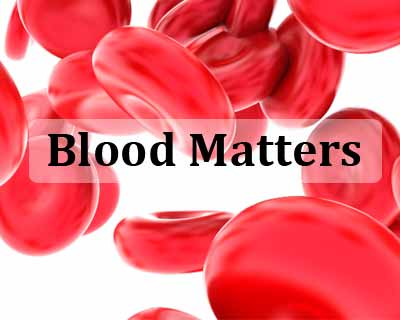- Home
- Editorial
- News
- Practice Guidelines
- Anesthesiology Guidelines
- Cancer Guidelines
- Cardiac Sciences Guidelines
- Critical Care Guidelines
- Dentistry Guidelines
- Dermatology Guidelines
- Diabetes and Endo Guidelines
- Diagnostics Guidelines
- ENT Guidelines
- Featured Practice Guidelines
- Gastroenterology Guidelines
- Geriatrics Guidelines
- Medicine Guidelines
- Nephrology Guidelines
- Neurosciences Guidelines
- Obs and Gynae Guidelines
- Ophthalmology Guidelines
- Orthopaedics Guidelines
- Paediatrics Guidelines
- Psychiatry Guidelines
- Pulmonology Guidelines
- Radiology Guidelines
- Surgery Guidelines
- Urology Guidelines
Blood Management in Gynae and Obstretics Patient: Practice points

Obstetrics is one of the major areas in medicine requiring blood transfusion. On one hand maternal morbidity and even mortality depends on availability of blood and blood products and on the other hand injudicious use of blood and blood products can cause infection, allergic reaction or antibody production in the mother which can have major impact on the present or future pregnancies . The most common complication of blood transfusion is error in transfusion.
Intravenous iron is indicated when there is poor tolerance to oral iron or a quick response is needed. There are two main preparations: irondextran and iron sucrose. There is evidence that intravenous iron therapy replenishes iron stores faster and more efficiently than oral iron therapy Recombinant human erythropoietin is used when anaemia is caused by renal disease. It is safe to use in pregnancy and there is no reported cases of teratogenicity
In 2015, National Blood Authority released the Blood Management Guidelines Obstetrics and Maternity
Following are the its main Practice Points:
- Major blood loss can develop rapidly around the time of giving birth in the absence of haemodynamic compromise; hence, close monitoring of all women, and early recognition and rapid response, are critical.
- In maternity patients requiring massive transfusion, the use of RBC and other blood components may be life-saving. However, in non-maternity patients, transfusion of RBC and other blood components is independently associated with increased morbidity and mortality.
- In maternity patients with critical bleeding, a structured approach to patient care that includes escalation procedures, and timely and appropriate use of RBC and other blood components (e.g. an MTP), may reduce the risk of morbidity and mortality.
- In maternity patients who are not actively bleeding, RBC transfusion should not be dictated by a Hb concentration alone, but should also be based on assessment of the patient’s clinical status (e.g. the risk of further haemorrhage). Most maternity patients are otherwise healthy and can generally tolerate moderate degrees of anaemia while medical therapies take effect.
- In maternity patients who are not actively bleeding, non-transfusion therapies, including iron, should be considered as part of the treatment of anaemia. (See recommendations R2 and R3, and practice points PP9–PP14)
- In maternity patients who are not actively bleeding, where transfusion is indicated, a single unit of RBC, followed by clinical reassessment to determine the need for further transfusion, is appropriate. This reassessment will also guide the decision on whether to retest the Hb level.
- In maternity patients, the risk of RBC alloimmunisation and potential clinical impact should be considered when balancing the risks and benefits of RBC transfusion.
- Direct evidence of the efficacy of RBC transfusion for treatment of anaemia is not available in maternity patients. Evidence from other patient groups and CRG consensus suggests that, with a: • Hb concentration >90 g/L, RBC transfusion is usually inappropriate.• Hb concentration of 70–90 g/L, RBC transfusion is not associated with reduced mortality. The decision to transfuse patients (with a single unit followed by reassessment) should be based on the need to relieve clinical signs and symptoms of anaemia, the availability of other therapies for the treatment of anaemia, the expected timeframe to giving birth and the presence of risk factors for haemorrhage. • Hb concentration <70 g/L, RBC transfusion may be associated with reduced mortality and may be appropriate. However, transfusion may not be required in well-compensated patients, or where other specific therapy is available. RBC, red blood cell; Hb, haemoglobin; MTP, massive transfusion protocol

Disclaimer: This site is primarily intended for healthcare professionals. Any content/information on this website does not replace the advice of medical and/or health professionals and should not be construed as medical/diagnostic advice/endorsement or prescription. Use of this site is subject to our terms of use, privacy policy, advertisement policy. © 2020 Minerva Medical Treatment Pvt Ltd